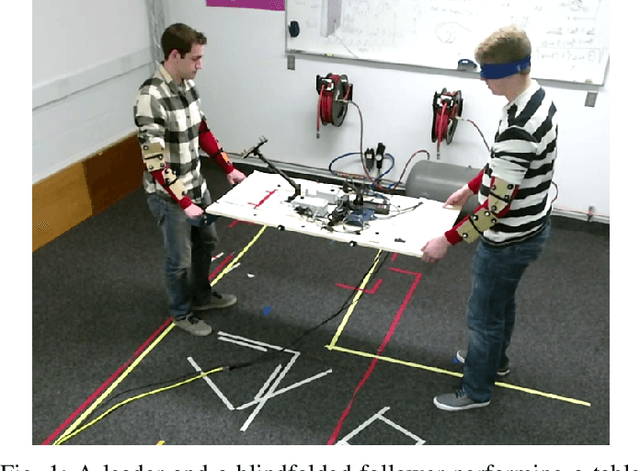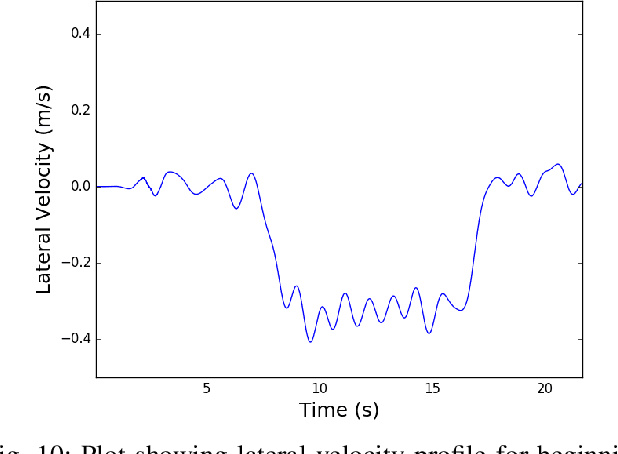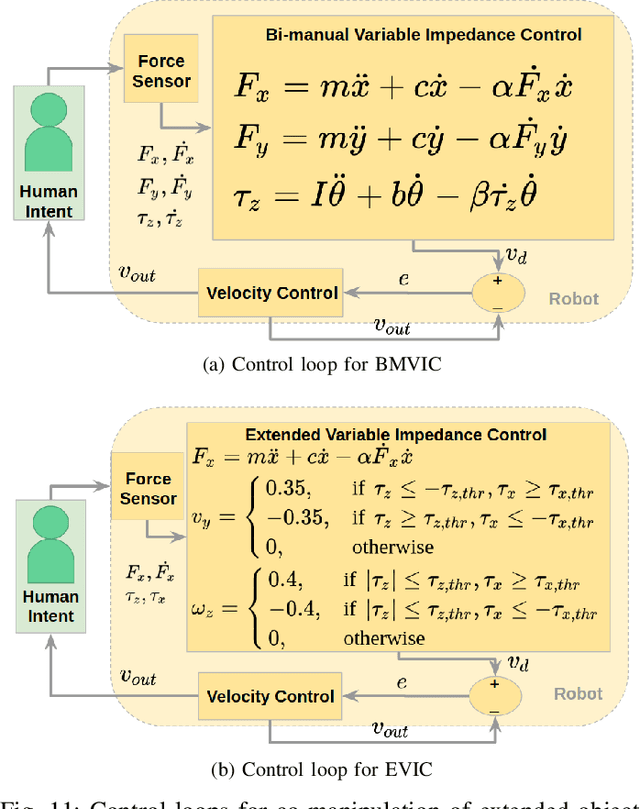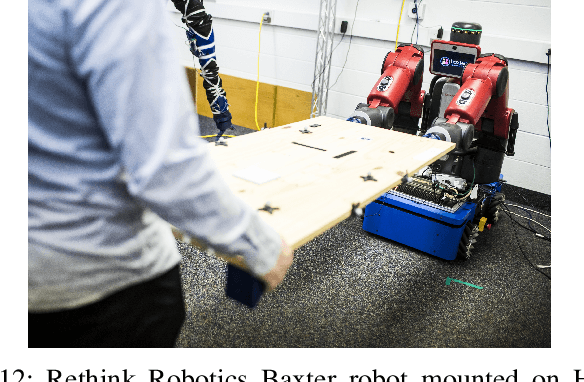Human-robot co-manipulation of extended objects: Data-driven models and control from analysis of human-human dyads
Paper and Code
Jan 03, 2020



Human teams are able to easily perform collaborative manipulation tasks. However, for a robot and human to simultaneously manipulate an extended object is a difficult task using existing methods from the literature. Our approach in this paper is to use data from human-human dyad experiments to determine motion intent which we use for a physical human-robot co-manipulation task. We first present and analyze data from human-human dyads performing co-manipulation tasks. We show that our human-human dyad data has interesting trends including that interaction forces are non-negligible compared to the force required to accelerate an object and that the beginning of a lateral movement is characterized by distinct torque triggers from the leader of the dyad. We also examine different metrics to quantify performance of different dyads. We also develop a deep neural network based on motion data from human-human trials to predict human intent based on past motion. We then show how force and motion data can be used as a basis for robot control in a human-robot dyad. Finally, we compare the performance of two controllers for human-robot co-manipulation to human-human dyad performance.
 Add to Chrome
Add to Chrome Add to Firefox
Add to Firefox Add to Edge
Add to Edge